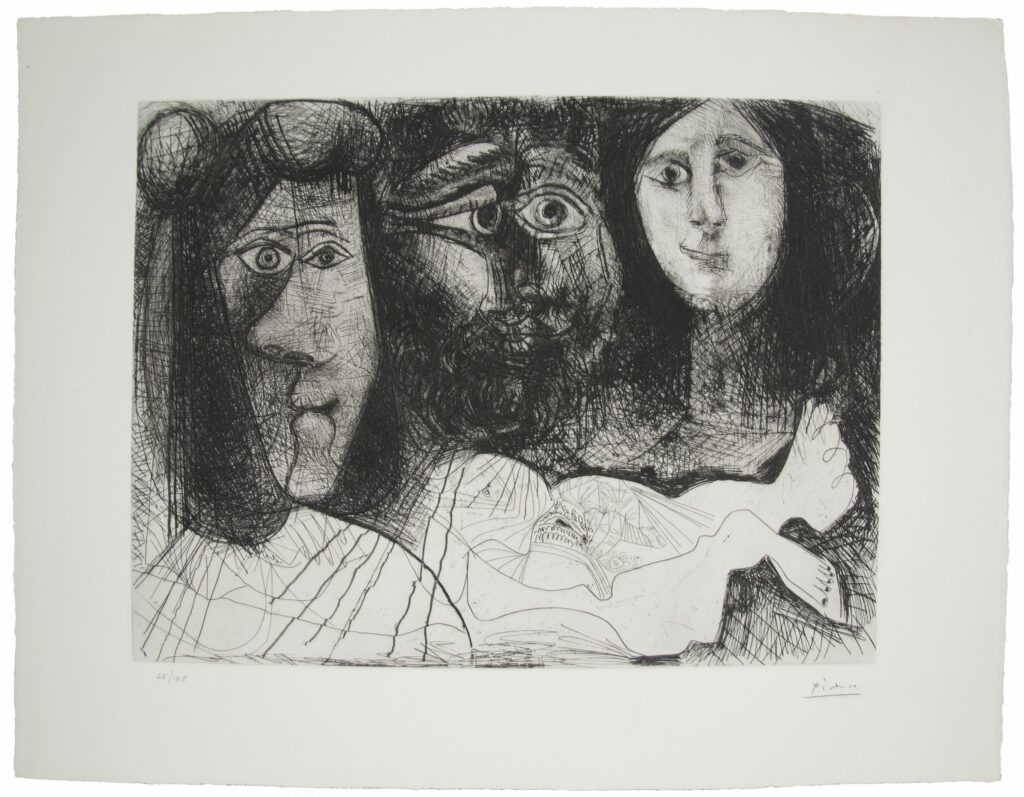
Picasso’s 1972 Fall of Icarus print didn’t begin as a tangible reference to Greek mythology. The faces we see floating above Icarus were first. Like its very own creation myth, before, there was nothing. Then came two nude women lounging side by side. Their sexuality was showcased prominently, with breasts and genitals on full display. Further states of the etching’s progress replace a Grecian-style vase with portraits. The faces we look at today began to emerge at this stage. Picasso then eradicated one of the odalisques while the other was eclipsed almost entirely by two more portraits. By the seventh state, all three portraits take center stage with the only remaining parts of the original nude women being the legs shown at the bottom right of the print.
These portraits float in mid-air, searching, but for what? They face entirely different directions, which acts as a subtle recurring theme in Picasso’s prints, perhaps expressing godly omniscience or an opposite state of confusion. Seemingly unaware of each other’s presence, the first and last faces look at us, the viewer. The middle duo turns in toward each other, with the rightmost face glancing sideways, again toward a perceived audience. Was Picasso caught in a creative block, unable to decide, or is this aura of indecision meant to be attributed to the figures themselves? In the print’s final state, three heads float in an abyss above what looks to us at first glance like a pair of mutilated legs. The original horizontal bodies are all gone; only two feet and the lower body remain.
This image was inevitably used as a frontispiece for a book written by art historian Jean Laymarie and edited by Albert Skira titled Fall of Icarus of the same year. This inclusion does not lead us down a path to discovering clarity but only complicates the mystery further. As somewhat “standard” for Picasso, he hardly ever created corresponding illustrations for a book but wild, strange, and beautiful pieces to complement the text.
In response to the reception of his Icarus mural in 1958, Picasso is quoted: “It is meaningless to look for things in paintings, what counts is finding things.” Leaving us with few clues in this Fall, he raises the bar for our quest to discover him; or maybe, the biggest clue of all is in plain sight. After all, Picasso left remnants of his original idea right underneath his final additions to the print, illuminating his own quest to find things in the thicket of his great mind.
Courtesy of John Szoke Gallery, New York.
